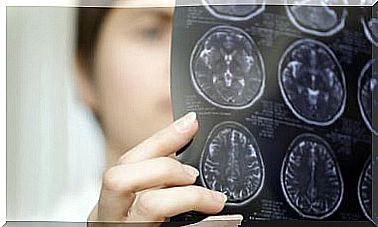Anxiety At The Wheel: Fear Of Driving?
We all know someone with a fear of driving. In its most serious state, this fear can lead to what psychology knows as amaxophobia .
33% of drivers worldwide suffer from this fear of driving to some degree, with women being the most prone. In Spain, it is estimated that 4% of drivers suffer from it and, of these, 87.5% are women, and 12.5% are men.
What is amaxophobia?
Amaxophobia is the irrational fear of driving or of having to get behind the wheel of a vehicle.
The word is a compound of two Greek lexemes: amaxi which means “vehicle” and phobia which means “phobia”.
It is important to note that “fear” is not the same as “phobia”. In the latter, the emotion appears distorted, exaggerated, irrational, and definitely not controlled. Therefore, amaxophobia is classified as an anxiety disorder. It has negative consequences on people’s lives and habits.
Rather, fear has a rational basis and can be controlled. Fear of driving is characteristic, for example, in novice drivers, and it will subside with practice as they become confident at the wheel.
What is the cause?
According to clinical psychologist Javier Díaz Calero, an expert in the treatment of this phobia and creator of the site “drive without fear”, people who suffer from amaxophobia can be classified into three categories according to the moment and the situations that originated the development of the disorder.
First category: novice drivers
The first category is that of those who have just obtained their driving license. This group naturally suffers from driving stress that is gradually overcome by experience. This fear of driving is normal, and there is no need to worry. However, there is a small group (representing 3% of novice drivers) who are unable to control it and may end up developing amaxophobia.
In these cases, when individuals try to drive again, they get really nervous and end up quitting. Díaz Calero explains that an “obsessive” concern for others appears in these people. Also, they can’t stand feeling judged by other drivers.
In Spain, this category represents 25% of amaxophobics.
Second category: phobia after an anxiety episode
This second category is made up of more experienced drivers. These are drivers who develop a phobia after suffering an episode of driving anxiety. Normally, this crisis coincides with some type or period of stress in your life that leads to this fear of driving. Generally speaking, they are drivers with five years of experience who have never had symptoms before.
These cases usually have two stages:
- In the first, they try to avoid at all costs the place where they suffered the crisis
- Later, in the second stage, they develop such restlessness that the mere idea of driving produces anxiety. The great fear of driving can lead them to abandon this activity. This is the majority group, and in Spain it represents 60% of those who suffer from this disorder.

Third category: amaxophobia after a traumatic experience in a vehicle
Finally, the third category includes those who have suffered a traumatic experience while driving or simply while in a vehicle. These are, for example, those who have suffered a car accident in the past. In this way, when they are exposed to similar situations, they respond with anxiety.
“When they are faced with a situation similar to that of the accident, a response is usually activated immediately in the form of anxiety that generates the fear that that situation may occur again,” explains Díaz Calero.
According to the psychologist, amaxophobes often have catastrophic thoughts about what might happen if they have an anxiety attack while driving. Thus, they feel unable to bear it and, finally, they end up avoiding certain routes or situations, for example, or they abandon driving.
How does it manifest?
There is a whole range of symptoms that go from physical-chemical to mental. In addition, they can manifest themselves to different degrees.
In general, it can be classified into cognitive, emotional or physiological and behavioral.
- Is the possibility of hurting yourself or someone else while driving a lot of stress? If your answer is positive, you have experienced the cognitive level of this disorder. Amaxophobes have catastrophic thoughts related to being in an accident, experiencing anxiety, or losing control. Ultimately there is fear of dying or causing death to other people.
- Have you ever experienced insecurity, muscle tension, stiffness, increased heart rate, sweating, nausea, dizziness, a feeling of loose arms, loose legs, or blurred vision while driving? All these symptoms on a physiological level are indications that you are experiencing a situation that causes you a lot of stress and anxiety.
- Have you felt that you need to be accompanied by someone to be able to drive? What causes me to slow down? Do you travel only on certain routes? People with this disorder either avoid driving or do so only under specific conditions. It is important to take this aspect into account as it largely determines the degree of amaxophobia.
On the other hand, it is essential to remember that people who suffer from this disorder “are afraid of losing control of the car and come to think of practically impossible situations. They become obsessed with the possibility of running over someone and not realizing it, and they even believe that they are going to overturn in a roundabout ” , explains psychologist Encarni Ayoso Galisteo.
It is possible that if there is no awareness of the causes and the phobia is not treated, it increases to the point of becoming a chronic situation and the person is unable to drive.
Consequences
There are different degrees of amaxophobia. From the fear of cornering or driving on the highway to not being able to get behind the wheel without panic. For this reason, depending on the severity of the phobia, various problems will arise.
One of the first consequences is dependency. Fear of driving can make it impossible for a person to get around on their own. It also affects personal and work life. For example, going anywhere is refused if it can only be accessed by car and there are no other transportation options. In the workplace, there are jobs that require moving by vehicle, and an amaxophobic will not be able to do it.
On the other hand, this problem can lead to a deterioration in self-esteem. The affected person can become frustrated, incompetent and even inferior.
Tips to overcome driving phobia
Wanting is power!
It is essential to become aware that you have a problem, and want to overcome it. It is mental work, so the person must feel that they can overcome it.
Find out where it comes from
In order to treat this phobia it is very important to determine where it comes from and what caused it. Do the exercise alone or with someone you trust, and try to notice what situations make you feel anxious while driving.
To drive!
One therapy to treat amaxophy is systematic exposure to the source of the phobia. “You have to get in the car and face the fact that causes anxiety,” says Encarni Ayoso.
Go by parts
You have to face the media. However, it must be gradual. In this way, you can gain confidence.
To do this, you need to start driving in quiet areas with little traffic. Then, the intensity of your rides will increase as you become comfortable behind the wheel. It is also recommended to write down in a notebook how you feel at the end of each trip.
On the other hand, the company of someone else on these trips would be convenient to overcome the phobia. In this way, problems will be avoided.
Control the symptoms of fear of driving
When symptoms such as rapid heartbeat and rapid breathing appear, try to stop them with abdominal breathing exercises and muscle relaxation. These techniques are aimed at reducing the physiological manifestations of fear of driving. Also, it is important to regulate thoughts in advance (to avoid catastrophic thoughts). We must stay positive and assess the risks while driving.
To look for help
If fear is uncontrollable and seems to overwhelm us, it is best to seek the help of a professional. A psychologist will be empowered to accurately determine the origin of the problem, in addition to offering support during the recovery process.
How do I know if I have amaxophobia?
Evaluate your symptoms according to the guide that we present in this article. If you find that you are unable to move forward or lose control over your emotions, then you may need professional help.
The disorder is not related to the skill of the driver, nor to his experience . Anyone is exposed to developing this phobia, be it a newbie or someone who has been driving for years.
For example, a driver with 20 years of experience could acquire amaxophobia after witnessing an accident or having some type of personal trauma experience.









